Model’s plans for massive build-to-rent Passive House developments in Melbourne was what set the 2025 Thrive conference in Australia buzzing but there were other presentations that really galvanised my attention. Kieran Leong and Ben Caine are Australian Passive House designers and architects working in quite different contexts but both their presentations offered some fantastic insights into how design professionals can effectively talk about Passive House to their clients, especially at the early stages of a project. Key is understanding a specific client’s motivation and values and finding ways to talk about Passive House benefits that support their perspective.
Aligning principles with values: Ben Caine
Ben Caine leads Leanhaus in Western Australia, an architectural firm that specialises in Passive House quality projects. His presentation was about classrooms he designed for an independent school—noteworthy in itself, given how desperately we need to improve the buildings in which kids are warehoused for many of their waking hours.
It gets more interesting, because his client was the West Coast Steiner School: no ordinary client. Rudolf Steiner had a lot of far-from-mainstream ideas about a lot of things and his theories about education include specifics about the physical environments in which learning happens. Ben shared with us some examples provided by his client, showing Steiner schools around the globe. I imagine most Passive House designers or architects would be rather daunted. Rectangular forms these are certainly not.

Listening to Ben, it was evident that he put a lot of effort into listening to his clients and understanding their perspective and what they valued. He said:
From early discussions, the school leadership made their aspirations clear: they wanted buildings that are nurturing, light-filled, and inspired by nature [that emphasise] organic, expressive forms … [they want to] prioritise natural materials, curving shapes and avoid harsh geometric lines, [with an aim] to create buildings that are harmonious with the environment and beneficial to those who inhabit them.
From this understanding, Ben discussed the benefits of designing to the Passive House standard by showing how it met the clients’ aspirations and values. Those first conversations looked like this:
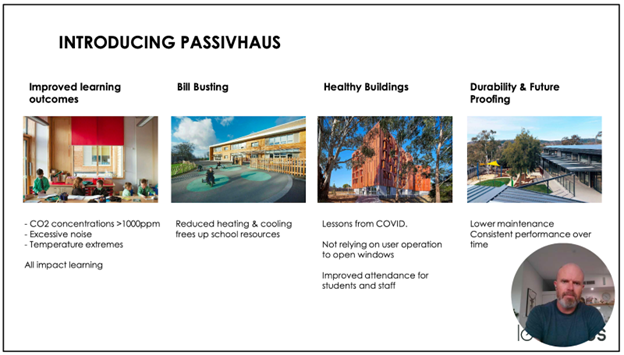
Ben detailed how he connected Passive House principles directly to Steiner values:
- “Where Steiner speaks of “breath and air,” we showed how mechanical ventilation delivers fresh, filtered air year-round.
- Where they value “rhythm and light,” we mapped how our daylighting strategy aligns with the need to reduce unwanted glare but maximise
- For “nature and materiality,” we presented our use of low-toxicity finishes, timber and natural materials.
- We also noted how Passivhaus naturally supports emotional regulation with acoustic and thermal comfort.
By doing this, we weren’t selling Passivhaus as a high-end option but revealing it as something inherently aligned… We positioned Passivhaus as a natural extension of the school’s own mission.” [emphasis mine]
The outcome was clients thoroughly onboard with Passive House certification. Ben says that Passivhaus is now accepted not as a foreign idea, but as a natural evolution of the clients’ values: “so much so that we are now delivering several homes for Steiner families”!
Here’s a couple of renders of the design showing how Ben integrated Steiner values into the design. (Yes, those circular windows can be supplied to Passive House specifications—I am trying to squash the covetousness that arises in my heart, especially on seeing the internal renders!)
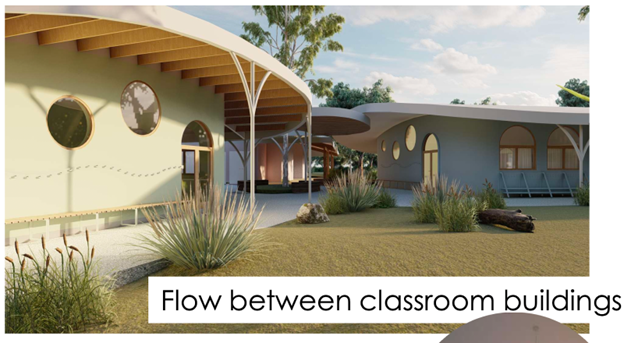
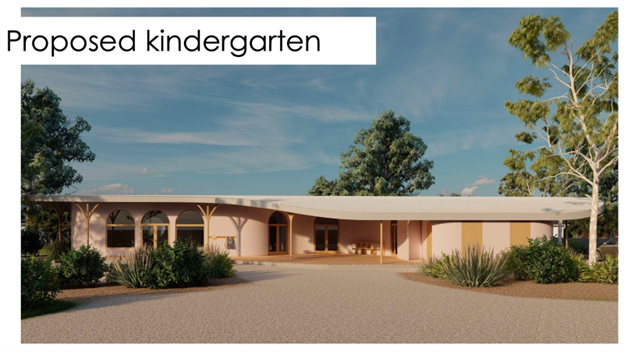
Images: Leanhaus
Find ways to agree: Kieran Leong
I heard a lot of resonance in a very different style of presentation the following day by Kieran Leong of DesignInc. He began by talking about the people’s motivations (their “why”) as architects, designers, engineers etc for building to the Passive House standard, before concluding with the bald statement: “Your whys don’t matter (to [your clients])…and that’s OK”.
Kieran talked about a specific, real project, a large residential development, but he wasn’t letting slip any identifying details. And never mind, because his argument is widely applicable. Every architect or designer knows the scenario: you’re brought onto a project, or have an opportunity to pitch or tender, you know Passive House is a no-brainer but it’s not part of the brief or even necessarily anywhere on the clients’ radar. You’re faced with a room full of people who have their own “whys”:
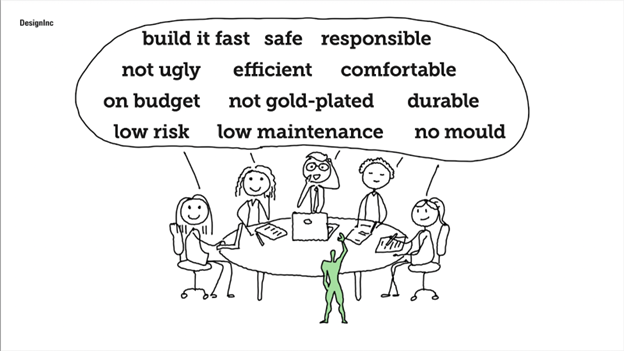
Graphic: DesignInc
The Passive House champion? That’s the little green figure in the front trying to get attention. It’s not the time to start talking like this …
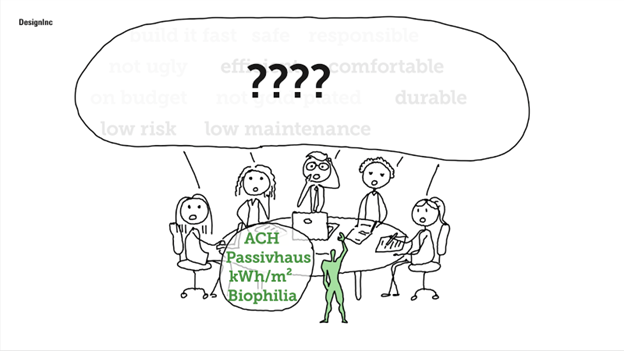
Graphic: DesignInc
As the stakeholders increase, the motivations become even more diverse. The point is to understand them and explain Passive House in relation to their stated values. “Don’t try to change minds. Find ways to agree,” said Kieran “‘If you like x, we can do y’.” He also emphasised starting these conversations early in the process. But mind your language: “You can say Passive House…eventually.”
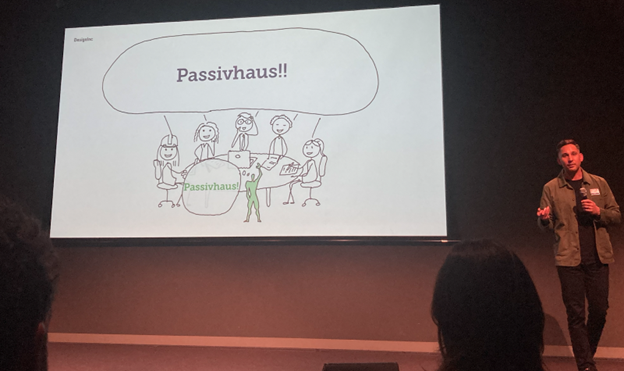
Kieran’s presentation then dived into a more technical case study, looking at different elements of construction and the options that were considered and eventually settled on (“not perfect … and good enough”.). It was clearly exhaustively considered, involved a series of compromises and budget considerations were significant. In the end, the design settled at the level of a Low Energy Building: a great outcome for a project that hadn’t specified Passive House at the outset. I’ll look forward to finding out the as-built details of this project. I hope it’s huge and high-profile and changes hearts and minds.
Of course here in New Zealand, sequential presentations by The Workshop have drummed in the message about not taking our technical standard out in public. Their recommendations don’t appear to have drifted across the Tasman, which is why Ben and Kieran’s presentations were all the more valuable.
Compelling storytelling: J Pablo Sepulveda Corradini
I want to end with some comments about a presentation by Melbourne-based J Pablo Sepulveda Corradini about research into the heat island effect plus future weather scenarios. Pablo is now the Sustainability Leader – Australia for Woods Bagot. He delivered a masterclass in powerful storytelling (ie effective communication).
This topic could easily have been very technical and boring—Pablo’s research involved some insanely complex modelling. Instead it had incredible impact because of the context he created by telling a story of his family’s origins and his development as an engineer and now Passive House designer. It was a conversation all about values. He skilfully shifted between these two scales throughout the presentation: the first personal and relatable and the second global and daunting. (Also bonus points for a witty visual gag delivered with impeccable timing: WTF? = Why This Fail? Humour done well is a reliable tool for keeping your audience attentive.)
This was also a really well-built slide deck. Pablo had over 70 slides in a 25 minute presentation and it was perfectly paced. Why? Because the slides were predominantly images that elicited an emotional reaction not only an intellectual one. Rich data visualisations were used well to illustrate numbers—I hadn’t seen this one from NASA and its impact on me was visceral. Click the photo below for the animation.
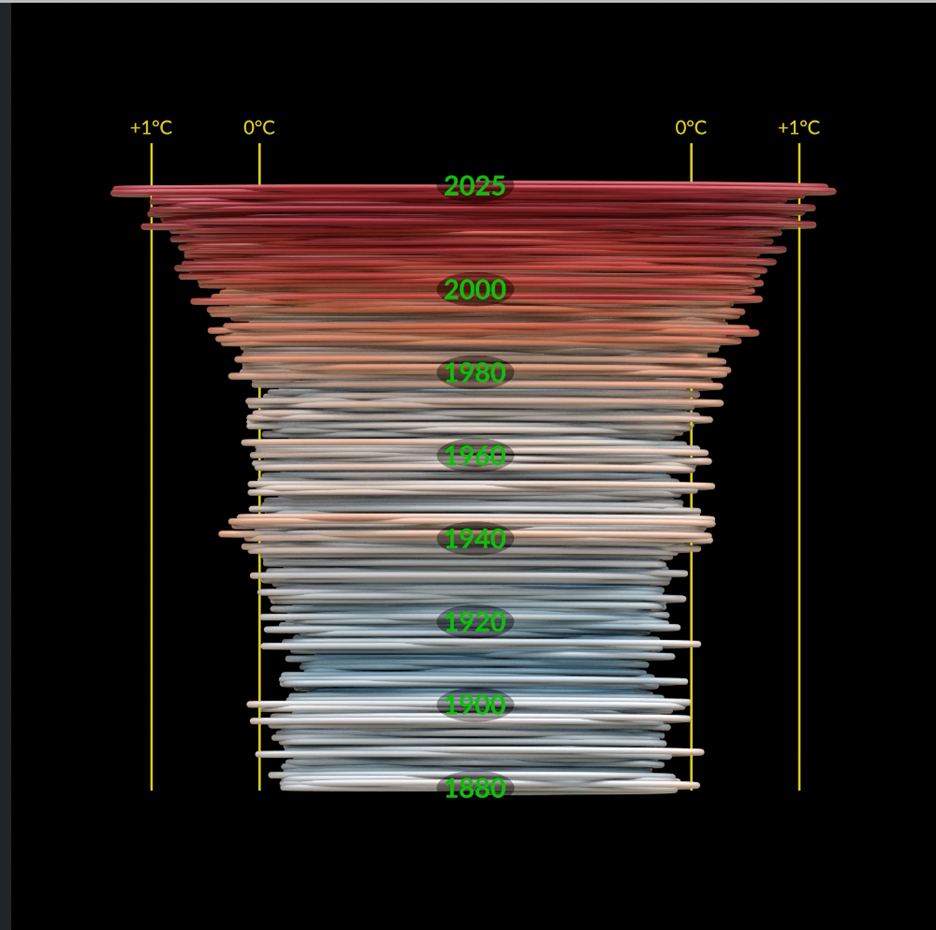
NASA Climate Spiral 1880-Present, visualizations by Mark SubbaRao.
Slides neatly summarised key data points but you had to be listening well to understand the context:
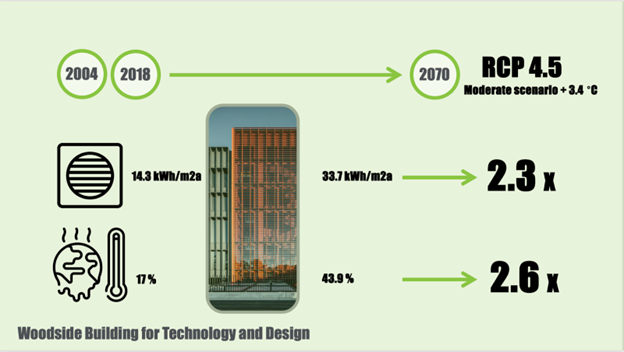
Notably, unlike one of the keynote presentations, there was not a single slide full of too-small text which Pablo read aloud. In my view, if someone who wasn’t in the room can later view your slide deck and understand your talk, you produced a handout, not a presentation. It’s beginning to feel like a slightly old-fashioned pleasure, being in a room listening to a person talking.
Rachel Rose is a communications consultant who specialises in explaining Passive House. She has worked extensively for Sustainable Engineering since 2018. All views above are her own. She presented at Thrive 2025 on the compatibility of natural, traditional building materials with the Passive House standard.
All slides copyright of their respective presenters and used with permission.